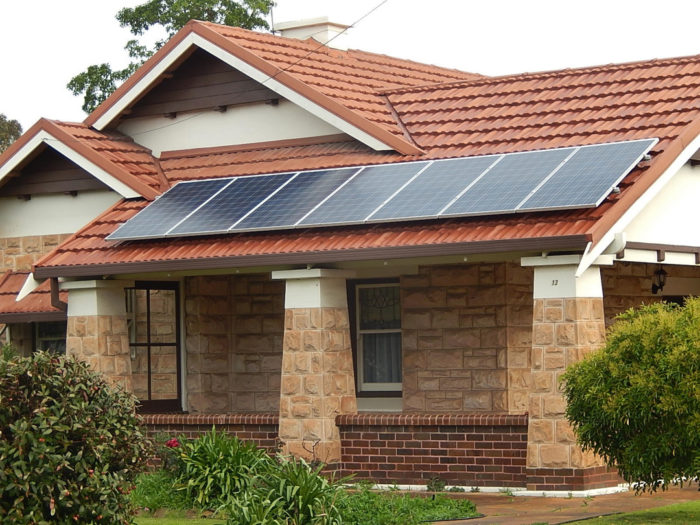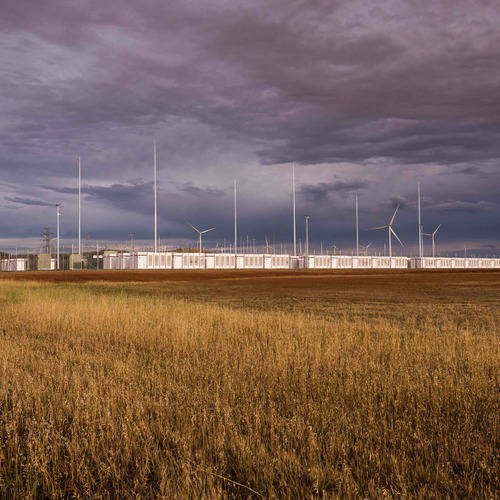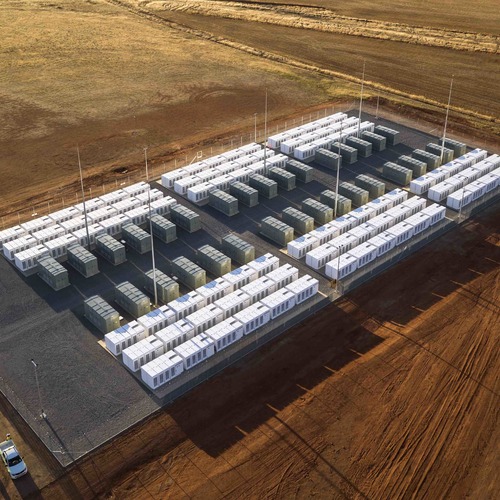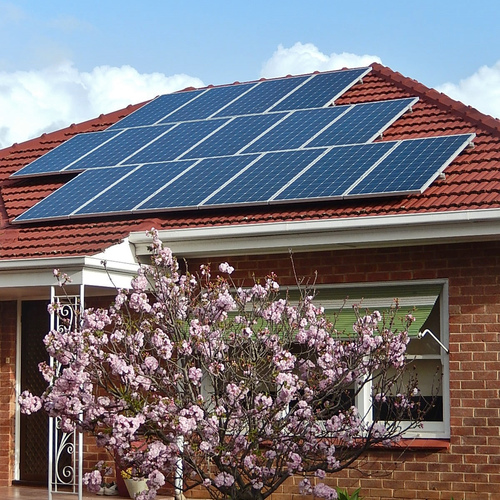
Image Credit: Michael Coghlan via Flickr
Residential photovoltaic (PV) systems, already a strong player in Australia, should get even more attractive over the next several years as home battery storage becomes increasingly available and less expensive, according to a new report.
Summing up a study by the Climate Council, The Guardian said in an online article that Tesla plans to sell its 7-kilowatt Powerwall battery in Australia by the end of this year, helping to push down the cost of solar electricity and make off-grid residential PV systems competitive with grid-derived electricity by 2018.
Tesla isn’t alone in targeting Australia, the report says. Enphase Energy is expected to launch its home energy systems, which combine solar generation, control, and storage, in Australia and New Zealand next year. The added competition will help drive down costs.
The Climate Council, which describes itself as “an independent, crowd-funded organization providing quality information on climate change to the Australian public,” said in its report that battery storage capacity should increase 50-fold in less than a decade. Battery prices fell by an average of 14% a year between 2007 and 2014, and even sharper declines are in sight as several manufacturers scale up production.
Solar already is popular in Australia
More than 1.4 million Australians already use PV systems to lower their electric bills, with the average system size reported at 4.5 kW. A big reason, the report says, is the high cost of electricity.
“Electricity prices in Australia are higher than in Japan, the European Union, the United States, and Canada,” the report notes. “Four Australian states (South Australia, New South Wales, Victoria and Western Australia) are among the top six places with the highest electric prices when compared with 91 other countries, states and provinces worldwide.”
Without citing any specifics, the report adds that PV systems in Australia are “among the most affordable in the world,” which has made them popular with lower and middle-income families. One survey of 700 households with PV found the average payback period was a little over three years; other studies have found systems pay for themselves in between four and 12 years.
(The Australian PV Institute said that a grid-tied residential system of less than 10 kW cost between $2.50 and $3.50 AU per watt in 2013, or $1.80 to $2.50 U.S.)
Changing rate structures also will help
The report also notes that lower compensation for the excess electricity that homeowners feed into the grid will ultimately make electricity more expensive and battery systems more economical.
“Households with solar PV which are no longer eligible for premium feed-in tariffs are now receiving a relatively low price for their solar power (a typical house in Victoria earns 6.2¢/kWh for solar power fed into the grid, dropping to 5¢/kWh in 2016), but are paying a much higher price to purchase electricity from the grid (typically around 33¢/kWh) at other times when the sun is not shining,” the report says.
“As feed-in tariffs are phased out, cost reflective tariffs are brought in and electricity prices increase over time (particularly at peak times), solar PV systems with added battery storage will become the most economical solution to meet household electricity needs,” it continues. “Under these conditions, households will get the most benefit out of their solar PV systems by maximising their use of electricity generated by their own solar panels and minimising the amount of electricity they purchase from the grid.”
Based on current prices for electricity, a battery system rated at 5 kWh to 8 kWh will pay for itself in less than 12 years, but that should drop to between 6 and 8 years if battery prices continue to fall as expected.
The report found several other benefits with wider use of batteries:
- Households with no PV systems could use batteries to store electricity during off-peak hours when rates are low and use it later when grid power is more expensive.
- Lower prices for batteries will make electric cars cost-competitive with conventional vehicles within the next 20 years.
- Batteries deployed on a utility scale could make expensive upgrades to the grid unnecessary.
- Retailers that install batteries could avoid paying for expensive power from “peaking plants” that run only at times of peak demand.
Weekly Newsletter
Get building science and energy efficiency advice, plus special offers, in your inbox.















0 Comments
Log in or create an account to post a comment.
Sign up Log in